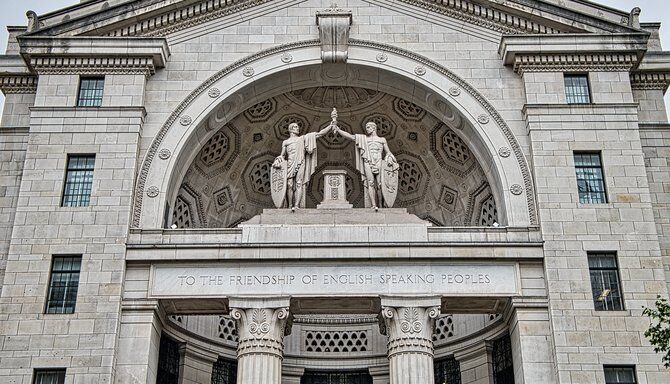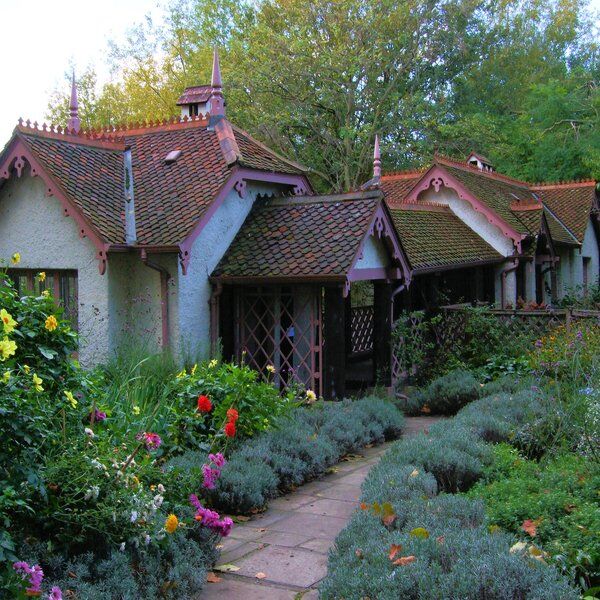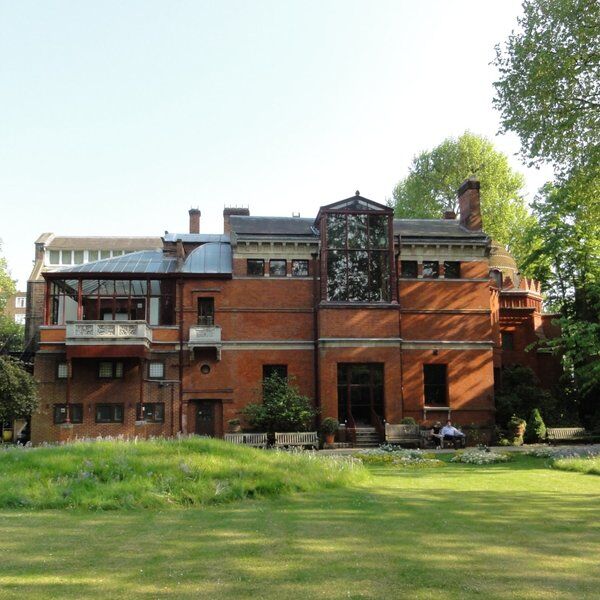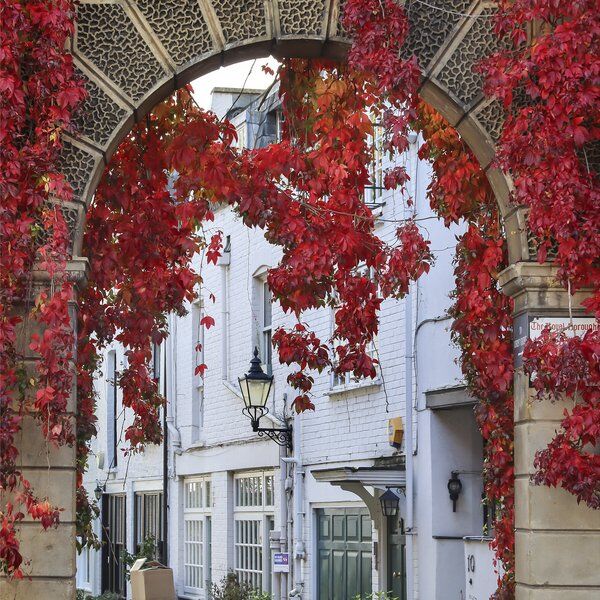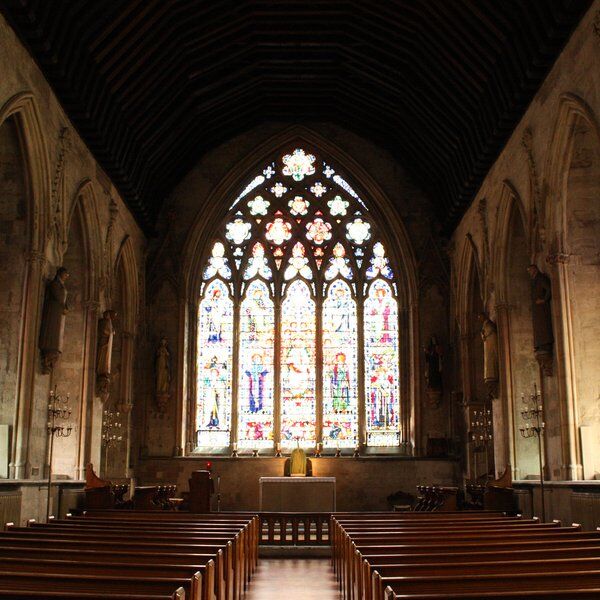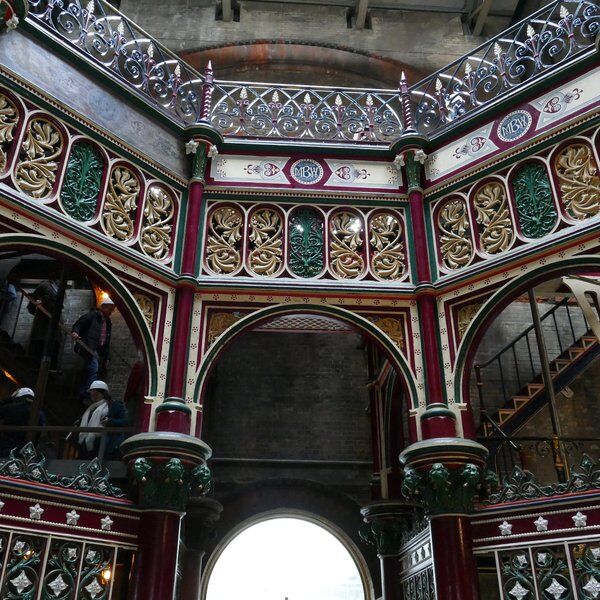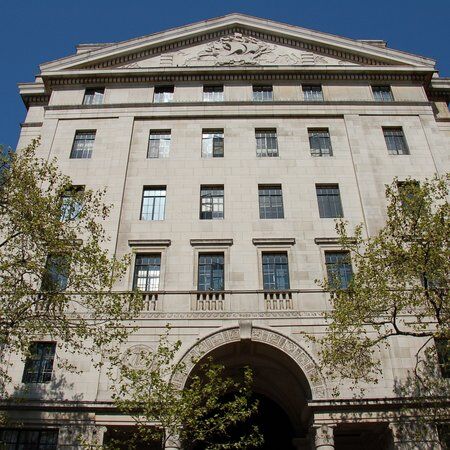
Discovering Bush House in London
Bush House is an iconic Grade II listed building at the southern end of Kingsway in London. Conceived as a major trade centre by American industrialist Irving T. Bush, the building was constructed in stages between 1923 and 1935. By the time it was completed, Bush House had already earned the title of the "most expensive building in the world".
Initially intended to be a hub for commerce, Bush House actually served a different purpose. For over 70 years it performed as the home of global broadcasting as the headquarters of the BBC World Service. Despite sustaining bomb damage in 1944, the building continued its involvement in international news until the BBC’s final broadcast from the site in 2012. Today, the building is part of King's College London.
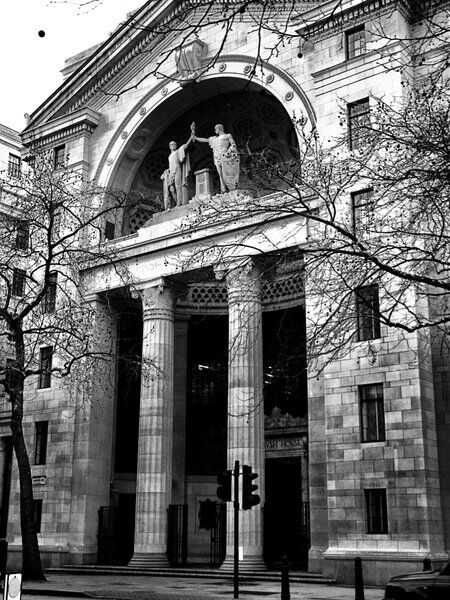
Bush House Origins
Bush House was commissioned and designed by American individuals and companies, primarily driven by Irving T. Bush of the Bush Terminal Company of New York. Bush's vision for the building was ambitious: to create a significant new trade centre that would partner America and Great Britain, bolstering their economies and safeguarding their futures.
Irving T. Bush's Vision
In 1919, Bush received approval for his plans to establish this vast trade centre in the Aldwych area of the Strand. His goal was to attract international traders by offering luxurious accommodations where manufacturers could showcase their products to buyers from around the world, conveniently located near London's financial district. The building’s design was created by American architect Harvey Wiley Corbett, who also designed Bush Tower in Manhattan.
The official opening ceremony of Bush House took place on 4th July 1925, a symbolic date marking American Independence Day. The ceremony was presided over by Lord Balfour, the Lord President of the Council, and included the unveiling of two male statues by American artist Malvina Hoffman. These statues, positioned at the building's entrance, represented Britain and America, jointly raising a torch "To the friendship of English-speaking peoples” as explained in the inscription. It was the manifestation of Irving T. Bush’s vision for a strong Anglo-American partnership.
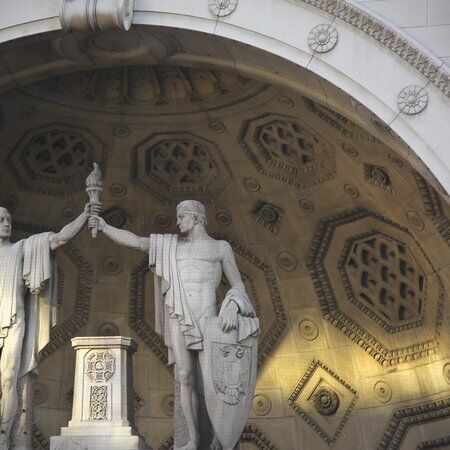
Building Bush House
The construction of Bush House was undertaken by John Mowlem & Co., and it was carried out over a span of ten years. The building was constructed in several phases: the Centre Block was a Beaux-Arts masterpiece completed in 1923 and opened in 1925, followed by the North-West Wing in 1928, the North-East Wing in 1929, the South-East Wing in 1930, and the South-West Wing in 1935. The entire complex was finally completed in 1935.
Upon its completion, Bush House was declared the "most expensive building in the world," having cost approximately $10 million. Built from Portland stone, the building became linked to other London landmarks such as St. Paul’s Cathedral and Buckingham Palace, as well as the United Nations building in New York, a further sign of US-UK friendship.
The building also had several luxurious elements. These include a concealed central heating system, which remains operational in the landing areas to this day, Indian hardwood floors, its own artesian wells, an indoor badminton court, a cinema, and even a small swimming pool in the basement, later repurposed as a drama studio for the BBC World Service. The building's entrances and internal staircases are encased in Travertine marble and listed by English Heritage.
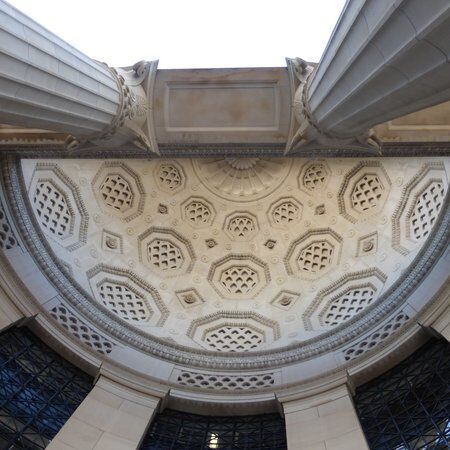
Bush House: Changing Purpose
While Bush's original plan was to create a trade centre, economic conditions in the 1920s led to a shift in the building's use. By the time the Centre Block was completed in 1923, a slump in trade necessitated a change in plans. The building's wings were adapted for office use and ever since refurbishments have been made every time it took on a new role. Despite the fact that not one of its different roles fulfilled Irving T. Bush’s original vision, Bush House did represent the Anglo-American partnership he believed in.
Bush House During the World Wars
The construction of Bush House took place against the backdrop of two World Wars. During World War I the site itself housed the "Eagle Hut" established by American businessmen and run by the YMCA. The Eagle Hut provided a space for British and American servicemen to socialise, emphasising the friendship between the two nations. A plaque on Bush House commemorates the Eagle Hut.
During a raid in 1944 a German V-1 flying bomb caused the statue representing America to lose its left arm. However, the statue’s right arm remained connected to the torch and the statue of Britain, which at the time was taken as a sign of their enduring friendship. It wasn't until 1977 that an American visiting his daughter at school in London noticed the damage and funded its restoration by the Indiana Limestone Company, just in time for Queen Elizabeth II's Silver Jubilee.
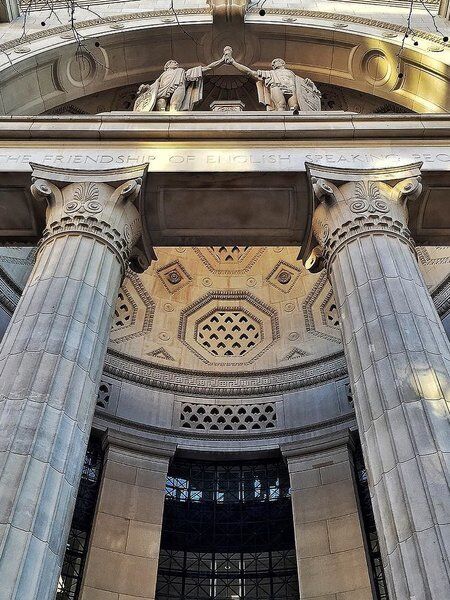
BBC World Service Era: World War II
At the beginning of World War II the BBC's Empire Service (later known as the BBC World Service) found itself bombed out of its original home at 200 Oxford Street and in need of new premises. Bush House, with its large office space, was an ideal candidate.
In 1940, the European Service of the BBC moved into the South-East Wing. Later, the BBC's foreign language services gradually filled the building, broadcasting events like Charles de Gaulle's speeches to the Free French, Churchill's iconic addresses, and emergency broadcasts during crises like the Hungarian uprising and the fall of the Berlin Wall. But there was also an increased urgency during wartime reporting, which resulted in live interviews becoming more common.
By 1941 Bush House was employing over 1,400 staff members who each played their part in broadcasting news across the globe. Journalists at Bush House had exclusive access to BBC Monitoring, making them the first to receive news from the war front. The role of Bush House during the war secured its status as a beloved landmark in the hearts of proud Londoners.
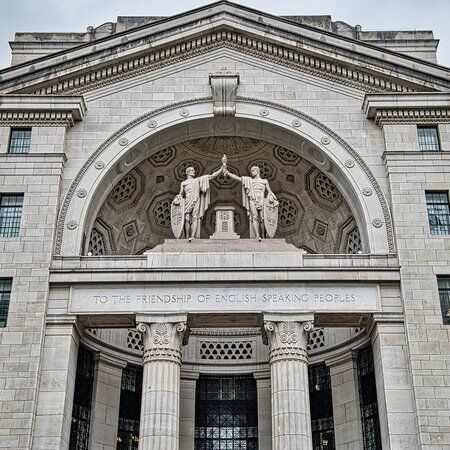
BBC World Service Era: Post-War Years
In the post-war years, Bush House continued to be occupied by the BBC World Service. By 1972, Bush House was broadcasting over 750 hours of programming weekly in 40 languages. Throughout the latter half of the century it facilitated the BBC's international broadcasting of critical events like the genocide in Rwanda, the war in Kosovo, and the 9/11 attacks. However, Bush House was never owned by the BBC; the building's ownership changed hands several times, including the Church of Wales and the Post Office Superannuation Fund, before being acquired by a Japanese corporation.
The Final BBC Broadcasts from Bush House
In the early 2000s, the BBC announced plans to transform its iconic London headquarters, Broadcasting House, into a modern hub for global broadcasting. This ambitious project aimed to bring together BBC Radio, BBC News, and the World Service into a state-of-the-art facility. Consequently, the World Service's operations began relocating from Bush House to Broadcasting House, a move completed in 2012. The final broadcast from Bush House was aired on 12th July 2012 and marked the end of an era.

Bush House and King's College London Campus
On 10th March 2015, King's College London acquired a 50-year lease for Bush House and Aldwych Quarter, as part of a plan to expand its Strand Campus. For Bush House this was the beginning of a new chapter, but renovations were required. Completed after a 2-year effort costing £60 million, the refurbishment project led by John Robertson Architects, returned Bush House to its former glory and was central London's largest refurbishment project in recent times.
Thanks to the renovations Aldwych Quarter successfully became a state-of-the-art university campus, with King's Business School being headquartered in Bush House. The school emerged from the former School of Management and Business, becoming the 9th faculty of King's College London. Bush House now houses a 400-seat auditorium, various lecture theatres, seminar rooms, academic offices, and a health centre. The central block of Bush House hosts The Department of Informatics. And the courtyard, previously used for car parking, was redesigned with a new glass pavilion that provides access to the Students' Union.

Explore London with CityDays
Interested in finding more fun things to do in London?
Discover London’s secret sights and noteworthy nooks by playing one of our London treasure and scavenger hunts, urban adventures, escape room games or walking tours.
You’ll find curated trails and hunts all over London, including Central London, Mayfair, Shoreditch, Kensington and Southwark.
We also provide team building activities in London that can be made bespoke to include your office, wherever in the capital you are.
All you have to do is team up with your partner, friends, family or colleagues to solve riddles, complete challenges and answer trivia to lead you on an unforgettable journey around London’s most intriguing streets.
The best part? We’ll recommend top-rated pubs, cafés and restaurants and give your team the chance to earn rewards by competing on our leaderboard.
Take the stress out of planning your visit to London and book your adventure today!
Not visiting London this time? Don’t worry, you’ll find us all over the world.
